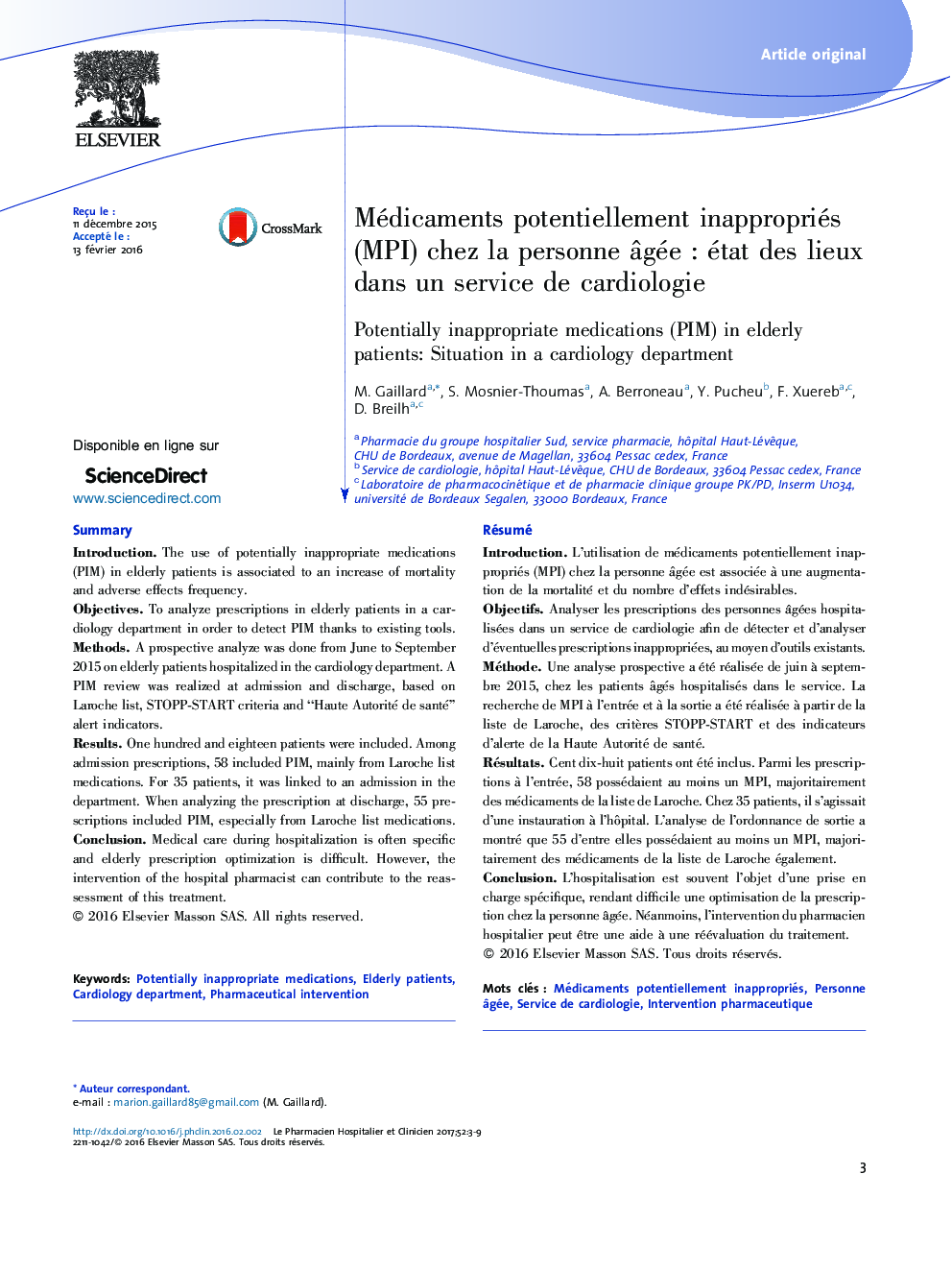| Article ID | Journal | Published Year | Pages | File Type |
|---|---|---|---|---|
| 5122408 | Le Pharmacien Hospitalier et Clinicien | 2017 | 7 Pages |
RésuméIntroductionL'utilisation de médicaments potentiellement inappropriés (MPI) chez la personne âgée est associée à une augmentation de la mortalité et du nombre d'effets indésirables.ObjectifsAnalyser les prescriptions des personnes âgées hospitalisées dans un service de cardiologie afin de détecter et d'analyser d'éventuelles prescriptions inappropriées, au moyen d'outils existants.MéthodeUne analyse prospective a été réalisée de juin à septembre 2015, chez les patients âgés hospitalisés dans le service. La recherche de MPI à l'entrée et à la sortie a été réalisée à partir de la liste de Laroche, des critères STOPP-START et des indicateurs d'alerte de la Haute Autorité de santé.RésultatsCent dix-huit patients ont été inclus. Parmi les prescriptions à l'entrée, 58 possédaient au moins un MPI, majoritairement des médicaments de la liste de Laroche. Chez 35 patients, il s'agissait d'une instauration à l'hôpital. L'analyse de l'ordonnance de sortie a montré que 55 d'entre elles possédaient au moins un MPI, majoritairement des médicaments de la liste de Laroche également.ConclusionL'hospitalisation est souvent l'objet d'une prise en charge spécifique, rendant difficile une optimisation de la prescription chez la personne âgée. Néanmoins, l'intervention du pharmacien hospitalier peut être une aide à une réévaluation du traitement.
SummaryIntroductionThe use of potentially inappropriate medications (PIM) in elderly patients is associated to an increase of mortality and adverse effects frequency.ObjectivesTo analyze prescriptions in elderly patients in a cardiology department in order to detect PIM thanks to existing tools.MethodsA prospective analyze was done from June to September 2015 on elderly patients hospitalized in the cardiology department. A PIM review was realized at admission and discharge, based on Laroche list, STOPP-START criteria and “Haute Autorité de santé” alert indicators.ResultsOne hundred and eighteen patients were included. Among admission prescriptions, 58 included PIM, mainly from Laroche list medications. For 35 patients, it was linked to an admission in the department. When analyzing the prescription at discharge, 55 prescriptions included PIM, especially from Laroche list medications.ConclusionMedical care during hospitalization is often specific and elderly prescription optimization is difficult. However, the intervention of the hospital pharmacist can contribute to the reassessment of this treatment.
